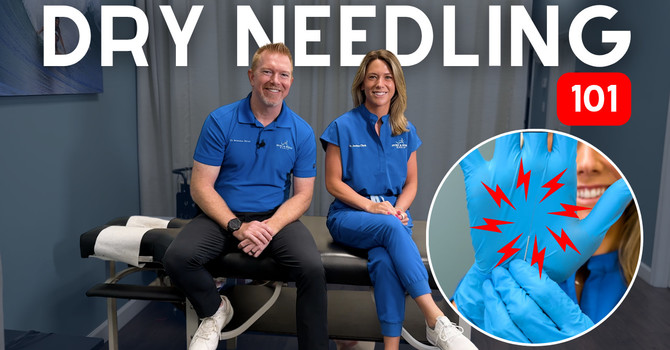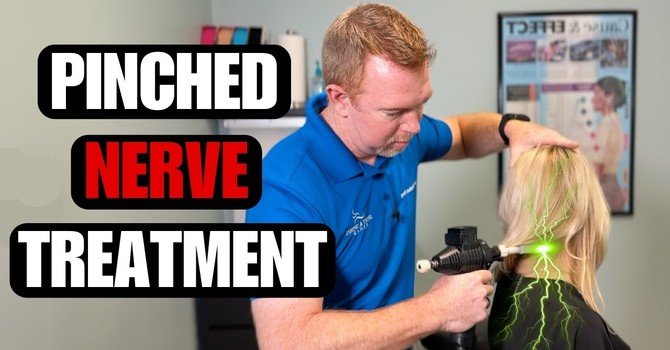In this video tutorial, Jupiter chiropractor, Dr. Nevel, demonstrates how to apply KT Tape, Rock Tape, and Kinesio Tape for Knee Pain. These taping techniques are used by the best chiropractors, physical therapists, and sports medicine doctors.
Step By Step Taping Instructions:
1. Make sure the skin is clean.
2. Cut four 14-inch strips and two 10-inch strips.
3. Round the corners of the tape to better durability.
4. Have the patient flex the knee 45 degrees.
5. Apply two 14-inch strips at approximately 40% tension around the knee cap to the quadricep (thigh) muscles with 0% tension on the ends.
6. Apply the 10-inch strips to the medial and lateral knee with approximately 40% tension with 0% tension on the ends.
7. Apply two 14-inch strips at approximately 40% tension to the hamstring muscles with 0% tension on the ends.
8. Rub the tape to activate the adhesive.
Products used in this video:
**Kinesio Tape**
Rock Tape – Standard size
https://amzn.to/2YrNC2V
Rock Tape – Bulk size
https://amzn.to/31nJn5y
**Scissors**
Kinesio Tape Pro Scissors
https://amzn.to/31gOHYe
Various colors of Rock Tape can be purchased at our Jupiter, FL chiropractic office.
Video Transcription:
How do you Kinesio Tape a knee? In this video, you’re going to learn how I Kinesio Tape knees in my Jupiter, FL chiropractic practice for general knee pain as well as a few tips and tricks that chiropractors, physical therapists, medical doctors use to make Kinesio taping easier.
Hey guys! What’s cracking? It’s Dr. Nevel, aka Dr. Ginga Ninja, aka the firecracker chiropractor! On this channel, we demonstrate different types of chiropractic treatments, periodic medical product reviews, as well as “how-to” videos, just like this one. If you’re new here, consider subscribing and make sure you ring that bell, so you never miss one of our videos! Any products that we use during this video will always be listed in the description and are available at our Jupiter chiropractic office. With that being said, let’s get cracking!
What is Kinesiology Tape? Kinesiology tape, also called Kinesio Tape, is an elastic therapeutic tape that helps support joints and muscles. It can be found on both professional and recreational athletes but gained a lot of popularity during the 2008 Olympics.
Kinesio Tape is different than traditional athletic tape because of the elastic properties as well as the wave adhesive pattern on the back. Instead of restricting movement like traditional athletic tape, Kinesio Tape adds support to the joints and soft tissue while still allowing full range and motion.
The first step in Kinesio Taping a knee is making sure the skin is prepped and cleaned. Since Kinesio Tape naturally doesn’t like any oils or lotions, use alcohol to make sure the skin is prepped and cleaned.
For today’s taping, we are going to use four 14-inch strips of tape as well as two 10-inch strips of tape.
PRO TIP #1: Round the corners of the tape and it won’t catch on clothing and it will last longer.
PRO TIP #2: To remove the tape from the paper, don’t try to peel it from the edge. Instead, tear the paper from the back and then peel away.
When taping, make sure that the ends are never applied with tension. Remove the back of the paper from the end, apply the first strip on the lower leg and pull it at approximately at 40% tension. Pull the tape around the medial patella and up the quadricep. The end is applied with zero tension. Do the same with the other strip, rip the end of the tape and apply the end of the tape with zero tension. Pull to 40% tension around outside of the kneecap and then up the quadricep again with no tension at the end.
Then apply the two 10-inch strips to the medial and lateral sides of the knee for extra support. Again, the ends have no tension. This strip of Kinesio Tape is applied at approximately 30-40% tension along the outside of the knee to support the lateral collateral ligament and we will do the same along the inside of the knee for the MCL.
PRO TIP #3: Make sure you rub the tape to activate the adhesive so the tape sticks and lasts longer.
If your knee pain also has hamstring involvement, you will want to Kinesio Tape the hamstrings as well. To do this we will need to first stretch the hamstrings. Instead of bringing the leg up, you can also have your patient bend over at the waist to stretch the hamstrings. You are going to apply the end with zero tension on the top of the calf. Pull the KT tape at approximately 40% tension along the medial hamstring and apply the end with zero tension. The same technique is used for the lateral hamstring tendon as well. Apply the end with zero tension, pull at approximately 30-40% tension, and again rub the KT tape to activate the adhesive.
In today’s video, we demonstrated just one way to Kinesio Tape knees for general knee pain, but there are a lot of different ways to Kinesio Tape knees based on specific injuries. Which leads me into the question of the day; Have you ever used Kinesio Tape for knee pain? What have your experiences been? Let me know in the comments below and if you found this video helpful, punch that like button, subscribe, and we will see you in the next video!
DISCLAIMER: This video and description contains affiliate links, which means that if you purchase from one of the product links, Sport & Spinal Rehab receives a small commission. There is no additional cost to the purchaser.






